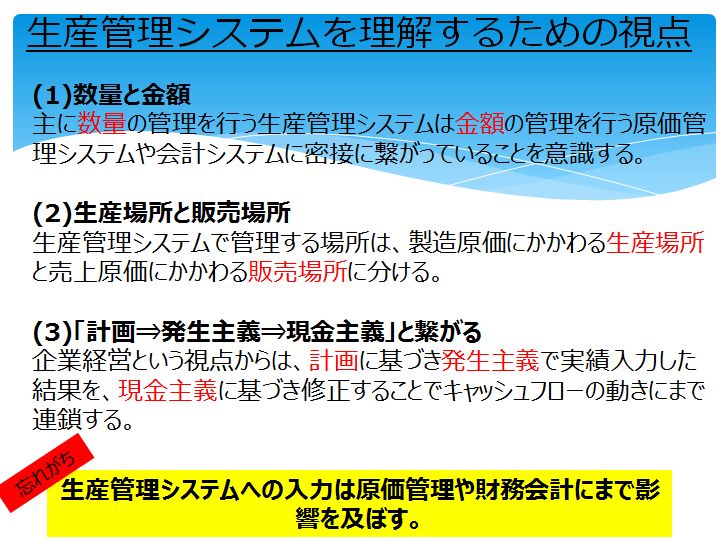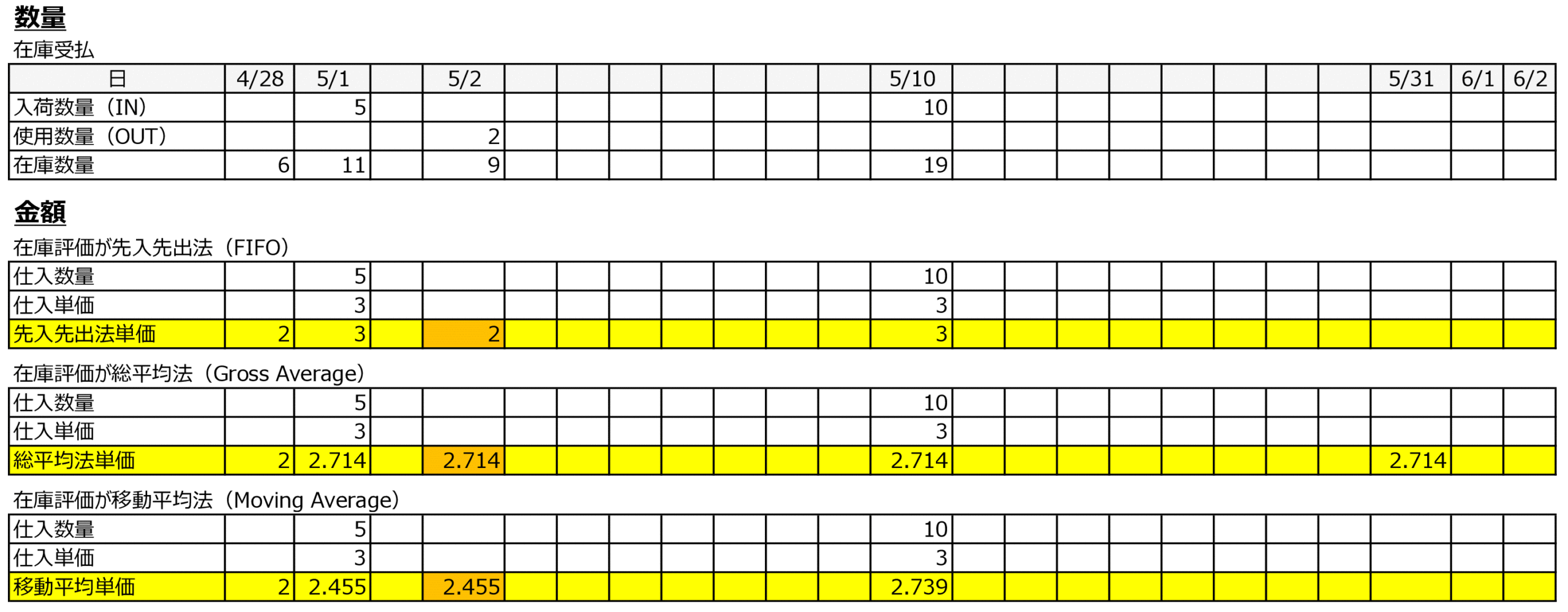Inventory Evaluation by the Perpetual Method and the Periodic Method
In the trifurcation method, the cost of goods sold is calculated by unconditionally posting the cost of goods sold to the purchase account at the time of purchase, transferring the beginning of the month to the end of the month, and transferring each contra account (opening stock and closing stock) and purchase account to the cost of goods sold at the end of the month. However, in Indonesia, it seems that in many cases, the amount consumed at the end of the month (the amount sold) is transferred to the manufacturing cost (cost of sales) calculated based on the standard cost, which is recorded in asset accounts (materials and goods) at the time of purchase.
- Characteristics of inventory receipts and disbursements generating accounting journal entries (Continuous Recording Method)
- Need to maintain a constant inventory valuation => FIFO and moving average methods are OK, but not the gross average method.
- If the order of receipts and payments is swapped on the assumption of real time input, the correct valuation will not be calculated.
- Every time you receive and pay, inventory, manufacturing costs and cost of sales are calculated correctly and a P/L is automatically generated.
- Characteristics of inventory receipts and disbursements that do not generate an accounting journal entry (inventory valuation method)
- Cost of sales is calculated using the trichotomous method.
- Synchronize accounting to inventory in the Opening Stock account and the Closing Stock account (P/L contra account)
- Cost of sales is calculated by transferring the opening stock account, closing stock account and purchase account to the cost of sales account.
- All P/L account balances are transferred to the Net Income account to calculate gross profit.
- The average method can be applied.
- The valuation is determined at the end of the month, so it doesn't matter if the inventory volume during the month is negative.
- For accounting purposes, the gross average unit price at the end of the month is applied, although it is possible to value inventory at the monthly average unit price (from the beginning of the month to today) even during the month.
- Cost of sales is calculated using the trichotomous method.
- Characteristics common to both
- The first-in, first-out method is based on the basic premise that purchases are recorded when they arrive.
- The invoice amount of CIF costs must be levied on the purchase invoice.
By the way, Month-To-Date (MTD) is "from the beginning of the month to today" and Year-To-Date (YTD) is "from the beginning of the year to today".
The duality of quantity and value in inventory management

Inventory control also has two sides, quantity and value, and the amount of inventory control should be synchronized with the accounting inventory account at the end of the month at the latest.
While an object becomes inventory in the warehouse when it is received (received after inspection), the valuation of money is determined at the time of purchase accounting after the invoice arrives, which means the valuation of outgoing goods is not determined unless the timing of receipt and purchase accounting is the same.
FIFO (First-In First-Out) and moving average methods are not valid unless the valuation unit price is determined at the time of delivery, and with the average method (monthly), the valuation unit price is determined at the end of the month when all the receipts of the month are known, but in reality, the valuation unit price is determined at the beginning of the next month when all the incoming invoices of the month arrive.

Therefore, even if all of the current month's deliveries arrive at the beginning of the following month as monthly invoices, they should be accounted for at the time of receipt.
- By recording dummy purchase at the time of receipt, inventory is made available, and by entering the D/O number to the invoice number, it is reconciled to the monthly summary invoice and the D/O number is corrected to the invoice number.
- Receiving
Dr. Purchase Cr. AP Accrued - On arrival of the invoice
Dr. AP Accrued Cr. AP
Dr. VAT-In Prepaid
The amount is fixed when the monthly summary invoice arrives, so if the amount on the invoice differs from the P/O amount, you will need to correct the amount of purchase orders and the amount of debt.
- Receiving
- At the time of arrival of the monthly summary invoice, the first arrival date is the date of purchase accounting (risk of reversal of the date of purchase accounting and the date of receipt of goods), and the month's delivery results are imported together with the first arrival date as the date of purchase accounting under the same invoice No.


